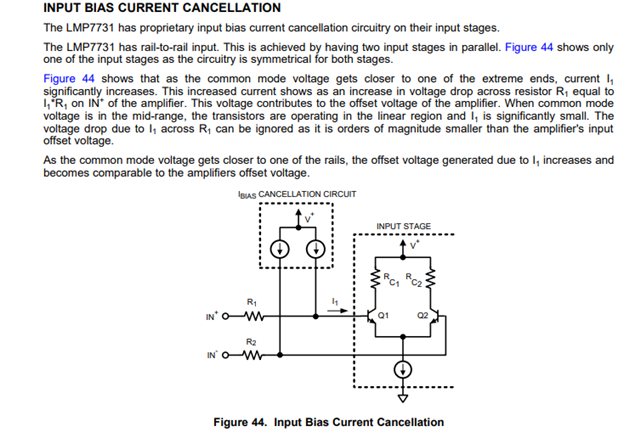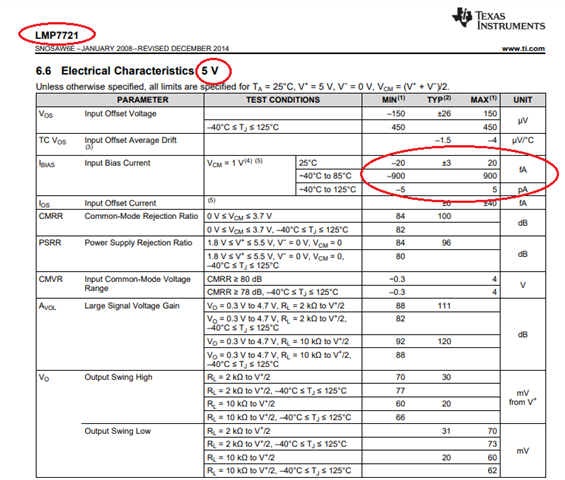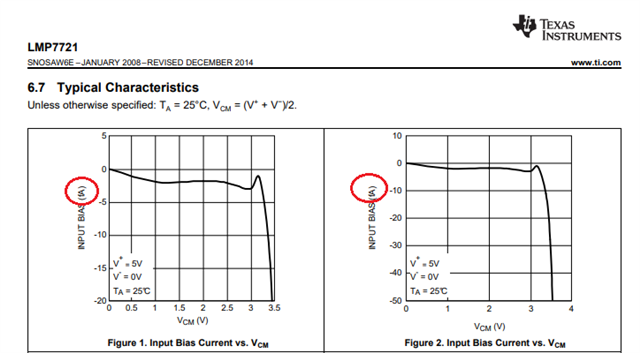Other Parts Discussed in Thread: LMP7721, OPA392
Hi Team,
I am having trouble finding an op-amp that would satisfy the customer requirements below. The customer finds LMP7731 is close but the data-sheet is lacking key information.
The customer needed an op-amp that is ultra-low noise (like the LMP7731) but also that has inputs with low bias current and low offset current across -40-125C when the common-mode voltage is at Vs (or Vs-20mV). the customer application is an ultra low noise current sense feedback loop and the circuit's worst-case total offset voltage (i.e., Vos + Ib_offset*Rin) needs to be low and guaranteed.
Figure 29 on page 11 of the data sheet shows the bias current on the LMP7731 rise when the inputs are within 1/2 volts of Vs and the customer would like to understand any information about what the bias currents do at the "rails" as it is advertised as an RRIO op-amp.
Can you help share information for the case where the common-mode voltage is at Vs, what the bias current and bias offset current is versus temperature and versus Vs
Similarly, what are the noise parameters (e.g., corner frequency, noise voltage density, noise current density 0.1-10Hz noise voltage) do versus temperature and versus Vs.
Can you also recommend another device that you believe might be better for the customer application?
Thank you in advance.
Regards,
Marvin






